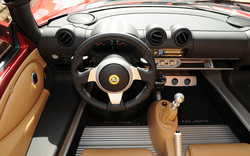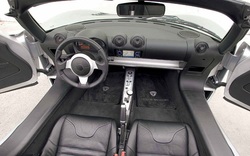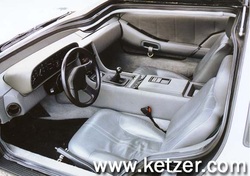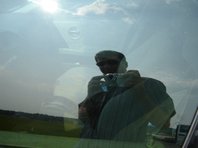Q: How much power does it take to send a Delorean into the future?
A decent amount of nyesmind readers have in their minds answered instinctively. 1.21 gigawatts. Except pronounced “jigga-watts”. In quainter times when automotive magnates could still raise money with cocaine deals alongside their government bailouts and a gigabyte of memory was unthinkable pronunciation of the term was still up in the air. Not many people needed to use the term. Since then silicon valley has co-opted the measurement from the electrical industry and decided on using a hard “g”. And while a stainless steel car with gullwing doors will always look futuristic, Back to the Future's use of the “j” pronunciation leaves the movie dated... except for 1.3 billion Chinese.
Just about any English term when said in Chinese is tweaked somehow. Cola is “kuh-lah”. William is “way-li-an”. Over the past few days I've had reasons to ask for different amounts of digital memory and as it turns out in China “giga” is pronounced like the rapper.
As long as we're on the subject of Deloreans though, there's something interesting that I always like to point out. From the 1950s up until extremely recently the standard vision of a future car was still something that flies. In a lot of ways this was a shell game Detroit was playing. Chrysler worked on turbine engines and GM showcased bubble canopies at their Motoramas leaving the public with Jetsons dazzled eyes. Meanwhile the automotive industry produced carburetted pushrod rear wheel drive V8s long past their expiration date. The story of the car from Back to the Future (reader's digest version) is that a young executive from GM quit with visions of making a realistic car of the future. The Delorean Motor Company would produce vehicles with advanced engines, chassis constructed of materials that would let the occupant walk away from a 70mph crash and a stainless steel exterior that would last fifty years. In the end it turned out to be BS. The DMC-12 ended up taking a Lotus Esprit chassis, adding gullwing doors and stainless steel and replacing the expensive Lotus engine with a cheap Volvo one. The Delorean was a dud, as was it's namesake's business model. It turned out Delorean didn't quit GM, he was fired for graft. Time and time again John Z. Delorean went hat in hand to the British government asking for loans (he very astutely put the factory in woefully underemployed Northern Ireland). Then just before the Thatcher government was going to turn off the spigot and things were really going sour Delorean was busted ON VIDEO buying a few kilos of cocaine from an FBI agent. Delorean's legacy was only saved three years later by a movie starring his creation which just happened to become a modern classic. But by the time of the sequel (which was placed in the future instead of the past) Delorean's vision of a pragmatic future car had lapsed, giving way once again to the societal meme of one that flies.
People watching the Back to the Future sequel (placed in 2015) when it came out might have been inclined to wonder if they really would have flying cars by that time. But as the year rapidly approaches society has come to grips with the fact that flying cars are a silly notion. The car of the future is efficient and runs on electricity provided by whiz bang high-tech batteries. Of course, the automotive industry as a whole would have been more than happy to keep promising the public flying cars and was dragged kicking and screaming into it by outsiders. Ultimately what happened is exactly what John Delorean feigned in the late 1970s. Introduced in 2009, the Tesla is a full on electric sports car, capable of out accelerating top of the line supercars for a fraction of the price. What's most interesting about the Tesla/Delorean connection though is that they're both just Lotuses suited to meet different purposes.
A decent amount of nyesmind readers have in their minds answered instinctively. 1.21 gigawatts. Except pronounced “jigga-watts”. In quainter times when automotive magnates could still raise money with cocaine deals alongside their government bailouts and a gigabyte of memory was unthinkable pronunciation of the term was still up in the air. Not many people needed to use the term. Since then silicon valley has co-opted the measurement from the electrical industry and decided on using a hard “g”. And while a stainless steel car with gullwing doors will always look futuristic, Back to the Future's use of the “j” pronunciation leaves the movie dated... except for 1.3 billion Chinese.
Just about any English term when said in Chinese is tweaked somehow. Cola is “kuh-lah”. William is “way-li-an”. Over the past few days I've had reasons to ask for different amounts of digital memory and as it turns out in China “giga” is pronounced like the rapper.
As long as we're on the subject of Deloreans though, there's something interesting that I always like to point out. From the 1950s up until extremely recently the standard vision of a future car was still something that flies. In a lot of ways this was a shell game Detroit was playing. Chrysler worked on turbine engines and GM showcased bubble canopies at their Motoramas leaving the public with Jetsons dazzled eyes. Meanwhile the automotive industry produced carburetted pushrod rear wheel drive V8s long past their expiration date. The story of the car from Back to the Future (reader's digest version) is that a young executive from GM quit with visions of making a realistic car of the future. The Delorean Motor Company would produce vehicles with advanced engines, chassis constructed of materials that would let the occupant walk away from a 70mph crash and a stainless steel exterior that would last fifty years. In the end it turned out to be BS. The DMC-12 ended up taking a Lotus Esprit chassis, adding gullwing doors and stainless steel and replacing the expensive Lotus engine with a cheap Volvo one. The Delorean was a dud, as was it's namesake's business model. It turned out Delorean didn't quit GM, he was fired for graft. Time and time again John Z. Delorean went hat in hand to the British government asking for loans (he very astutely put the factory in woefully underemployed Northern Ireland). Then just before the Thatcher government was going to turn off the spigot and things were really going sour Delorean was busted ON VIDEO buying a few kilos of cocaine from an FBI agent. Delorean's legacy was only saved three years later by a movie starring his creation which just happened to become a modern classic. But by the time of the sequel (which was placed in the future instead of the past) Delorean's vision of a pragmatic future car had lapsed, giving way once again to the societal meme of one that flies.
People watching the Back to the Future sequel (placed in 2015) when it came out might have been inclined to wonder if they really would have flying cars by that time. But as the year rapidly approaches society has come to grips with the fact that flying cars are a silly notion. The car of the future is efficient and runs on electricity provided by whiz bang high-tech batteries. Of course, the automotive industry as a whole would have been more than happy to keep promising the public flying cars and was dragged kicking and screaming into it by outsiders. Ultimately what happened is exactly what John Delorean feigned in the late 1970s. Introduced in 2009, the Tesla is a full on electric sports car, capable of out accelerating top of the line supercars for a fraction of the price. What's most interesting about the Tesla/Delorean connection though is that they're both just Lotuses suited to meet different purposes.
Lotus Elise interior:
Tesla Roadster interior:
Lotus Esprit interior:
Delorean DMC-12 interior:
As for walking away from a 70mph crash, the first function of a crash worthy vehicle is to keep the occupant safely inside. When you look at crash test videos watch the doors. On a safe car they barely move.
Something similar to Chinese cars:





 RSS Feed
RSS Feed